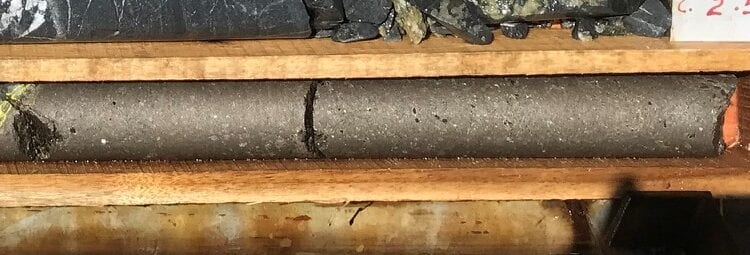Intersects 15.4m wide zone of nickel sulphide mineralisation
Blackstone Minerals Limited (ASX BSX) has intersected massive (MSV) sulphides in its four maiden drill holes at Ban Chang, part of its Ta Khoa Nickel-Cu-PGE project, Vietnam.
Blackstone’s four maiden drill holes cover a distance of over 1.2km along strike and within a 1.2km-long massive sulphide target zone defined by high priority EM plates.
Drillhole BC20-04 intersected a zone of 15.4m wide vein of sulphide mineralisation which includes MSV, NTS and DSS sulphide mineralisation.
Managing Director, Scott Williamson, said the drilling is part of an ongoing campaign to target regional MSV as Blackstone aims to build its resource inventory at Ta Khoa.
Blackstone’s second drill rig will continue to follow the in-house geophysics team throughout the Ta Khoa nickel sulfide district, testing high priority EM targets generated from 25 MSV prospects including King Snake, Ban Khoa, Ban Chang, and Ban Khang.
“We’re pleased to announce a significant intersection of 15.4m of nickel sulphide mineralisation at Ban Chang, as this adds potential to a bulk underground mining scenario to supplement possible open pit mining at the Ban Phuc disseminated sulphide orebody, where Blackstone continues to aggressively drill out the King Cobra discovery zone.
“We look forward to further results from Ban Chang and the King Cobra discovery zone at Ban Phuc.
“The results will enable us to better understand the full potential of this nickel sulphide district which includes a further 24 massive sulphide vein targets analogous to Ban Chang and the successfully mined Ban Phuc massive sulphide underground mine.”
The Ban Chang prospect is located 2.5km south-east of the Ban Phuc deposit and processing facility, adjacent to the Chim Van – Co Muong fault system. The prospect geology consists of a tremolitic dyke swarm within phyllites, sericite schists and quartzites of the Devonian Ban Cai Formation. The known mineralisation style is mainly veins and lenses of massive sulfide, as well as disseminated sulfides (DSS) hosted within tremolite dykes. The dyke swarm is approximately 900m long and varies between 5m and 60m wide.











